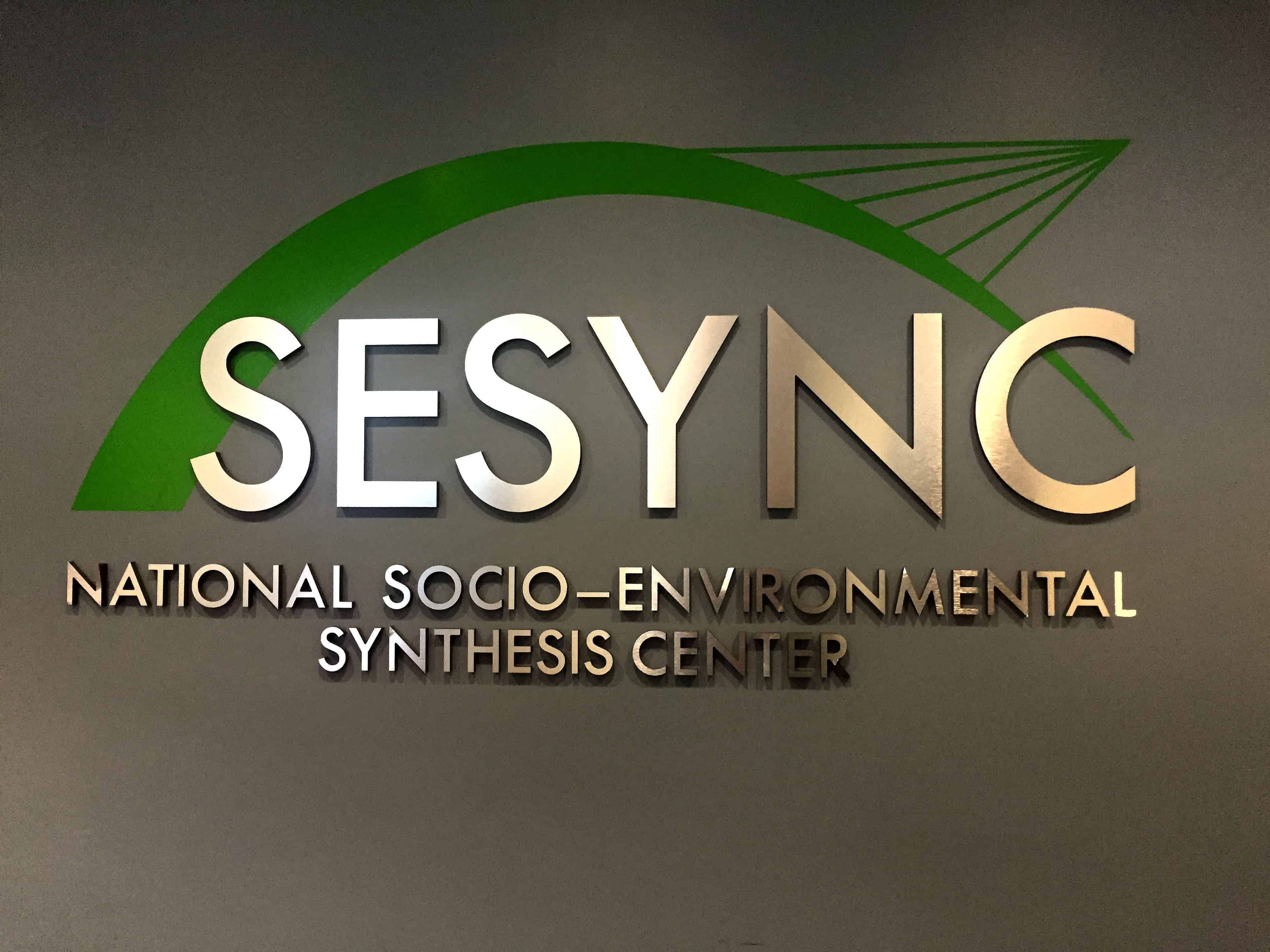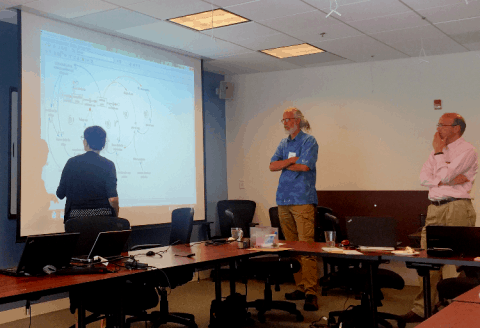May 20, 2016

From April 25–29, CDDEP participated in a working group hosted by the National Socio-Environmental Synthesis Center (SESYNC) to discuss broad challenges of and possible solutions to governing antibiotic resistance and pesticide resistance evolution from a social and ecological perspective. Researchers from various science backgrounds participated in the event, including evolutionary biologists, social ecologists, psychologists and entomologists.
Sessions were centered on individual participants’ research, followed by collaborative brainstorming aimed at applying the group’s collective expertise towards developing a social-ecological system (SES) in the context of evolutionary resistance. SES is a conceptual framework that incorporates ecological and social systems to understand drivers for change and robustness in a coherent system. In this case, the SES framework is being applied to determine social and ecological drivers for the use of antibiotics and Bacillus thuringiensis (Bt) crops. In addition, the framework is being used to examine what requirements are needed to redirect the system from a high resistance state to low resistance state.
To narrow the focus of discussion, participants were split into two groups. One group was assigned to antibiotic resistance, while the other to insect resistance.
Peter Jørgensen, a macroecology biologist at the Global Economic Dynamics and the Biosphere at the Royal Swedish Academy of Sciences, led the discussion on antibiotic resistance. The first task of this group was to identify key drivers for antibiotic resistance by considering the dynamic interrelations among individual actors and the environment. The discussion focused on the multiple layers that need to be involved in controlling resistance, including pharmaceutical interests, doctor-to-doctor and doctor-to-patient relationships, and exogenous environmental and social issues that drive the use of antibiotics.

On the insect front, Scott Carroll, an evolutionary biologist at UC Davis, directed the discussion. This group emphasized the importance of growing non-Bt (non-resistant) crops alongside Bt-crops to decrease the selection pressure for resistant genes in insect populations. Farmers and their discontent with planting non-Bt crops – because yields and profits decrease – continues to be one major hurdle in preserving the efficacy of resistant crops. Applying the SES framework in this context may improve opportunities for fostering positive farming practices and creating new incentives for decreasing selective pressures on insect-resistant genes.
Over the course of 18 months, the working group is expected to meet three more times to continue its pursuit on formalizing socio-ecological strategies on resistance evolution. Future meetings will dive further into the topic by examining case studies, analyzing macro-level data and publishing policy documents.
Thus far, engagement and collaboration among participants has been instrumental to its success. A hallmark of this pursuit has been its unique angle in thinking about living with resistance rather than eradicating resistance. As CDDEP Fellow Eili Klein noted:
“It is important to realize that resistance is an evolutionary artifact of antibiotic/pesticide use and that it cannot be eradicated. Bacterial resistance to antibiotics existed long before the use of antibiotics. Because use increases resistance, we will always have a resistance problem, and it’s likely that some people die of resistant infections. Our conversations should acknowledge this unfortunate reality, but also the fact that improved use of antibiotics can save many lives—both through direct therapeutic use and indirectly by maintaining antibiotic effectiveness. We must learn to live with resistance and manage the problem so that we have favorable outcomes.“
Nestor Mojica is a CDDEP Research Analyst.











